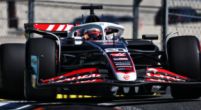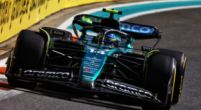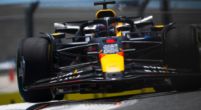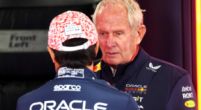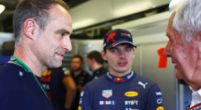Tech

Technical Analysis | How Ferrari copied Red Bull to widen working window
With a spectacular shakedown at Fiorano Circuit right after the online launch, Ferrari showed their new car, the SF-24. Despite still having some “conventional” solutions, especially if compared to Aston Martin, “the SF-24 has been designed to have a bigger operating window”, as Carlos Sainz confirmed during the usual post-launch interview.
From a technical point of view, the team have worked on two main aspects: widening the operating window and improving the tyre wear over the race distance while still making the power unit reliable in all its elements.
Ferrari worked on all the areas to achieve these ambitious goals, improving the aspects where the SF-23 suffered to extract the maximum performance from the car. Let’s look at what they changed on the SF-24.
Red Bull-style cooling inlet
Starting with the front view, it is already possible to notice a substantial change in the nose area. It is now wider at the connection to the second flap compared to the previous version, which narrowed in the connection area (green arrow). As for the flaps' design, they remained very similar, although the 5 “flow-diverter” metallic supports that connected the last and penultimate flaps on the SF-23 have disappeared.
The push-rod scheme has been maintained on the front suspension, and it is possible to notice a change in the connection of the front arm of the upper triangle to the chassis and also in the anti-dive between the two arms. The rear arm is pivoted much lower than the previous version, generating a difference in height between the two, which could be useful for reducing pitching under braking (yellow arrow and dotted line, second picture).
Substantial differences exist in the cooling inlet and the sidepods' shape. The cooling inlet is now deeper and shallower and has a more squared shape compared to the previous version. The lower lip extends much further forward, as already seen on the RB19, increasing the airflow at the intake and creating a "tray" useful for separating the flow (pink arrow in the first photo).
The sidepods underwent a profound revision: the line and the green arrow (second photo) allow us to appreciate the big change in philosophy. The external wall of the sidepod has been heavily excavated in the lower part, creating a vast undercut that continues throughout the lower lateral part of the sidepod itself. This solution was made possible by placing the SIS (lower lateral structure) directly into the floor to free up further space in the lower area of the sidepod. Furthermore, the line and the blue arrow in the first photo allow us to understand that the upper part of the "sidewall" of the sidepod has been shortened to create the water-slide inside the sidepod itself, useful for increasing the amount of air directed towards the rear of the car.
The engine cover has also been redesigned in the highest portion: it now features two long ducts (or "bazookas") useful for expelling the hot air coming from the engine directly onto the beam wing, improving cooling efficiency and generating downforce at the same time (arrow and yellow line in the first photo).


The pink arrow in the second photo indicates that the floor-edge wing has also been revised. It is more curved and inclined towards the outside to manage the turbulence from the front wheel differently.
Last but not least, near the halo connection and placed in front of the S-Duct exit, a vertical profile is connected to the halo itself, acting as a flow diverter towards the water-slide and the car's rear part.
All these changes to the front of the car are absolutely not accidental, as during the 2023 season, Ferrari suffered from understeer, which was a major limitation especially on front-limited circuits. However, changing the front part of the car also made it necessary to revisit the entire car body and the Venturi channels to increase both efficiency and the downforce generated.
Only team to adopt a pull-rod rear suspension
For this reason, looking at the rear photo, it is possible to notice some further divergences between the two cars: while the SF-23 still featured sidepods with "goldfish tanks", water-slides were introduced on the 2024 car. The two large slides are useful for directing a greater air flow towards the beam wing and the diffuser (green arrow). The engine cover has also been revised in its terminal part, with a single large opening directed to the beam wing (purple arrow). To conclude, there was also a small change on the rear wing, which, as underlined by the technical director Cardile, was designed to be more efficient with the DRS open. For this reason, it shows a cut in the endplate transition, as seen on many cars last year, to reduce drag generated by the rear wing (orange arrow).

Last but not least, this view also allows us to appreciate the rear suspension, which has remained pull-rod (only on Ferrari and Haas): this decision is because, after two years where both the F1-75 and the SF-23 were very strong in slow corners and traction, the engineers preferred to maintain an "already known" system, rather than having to start from scratch with a new solution, which would invariably have resulted in a longer "know-how" path, with a consequent waste of time compared to competitors. Despite this, both suspension systems have been completely redesigned, as regards the gearbox and the suspension kinematics themselves, to improve the interaction between mechanics and aerodynamics and create a more stable aero-mechanical platform.
Cardile expressed during the interview: "With the SF-24, we wanted to develop a completely new concept. Every part of the car has been redeveloped, even though our starting point was last season's developments. We listened to the drivers' feedback and turned those ideas into the new car. The aim is to give the drivers a car where it is easier to get the most out of."
His words underline the necessity to build a fast car that is also easy for drivers to drive. Last year, the drivers often had to push it to the limit to extract all the potential of the SF-23. This year, the objective will be to make it more drivable, to best adapt it to all types of circuits and to get closer to their rivals. This idea is strongly connected to the necessity of widening the car’s operating window to make the SF-24 competitive not only on certain layouts and in specific atmospheric conditions but in most conditions normally faced during an F1 season.
The Mranello-based team also worked hard on engine reliability to ensure that they’ll be able to cover all the 2024 races with the 4 engines allocated for the season, as Enrico Gualteri pointed out: "Despite engine development being frozen, that doesn't mean there aren't interesting challenges. We are doing more races than ever in a championship this year, and that means we have to react faster than ever. To prepare for this, we have gone through all the processes around the engine to achieve maximum performance”.
In conclusion, the new SF-24 was designed to compensate for the previous car's weak points without distorting the initial philosophy but continuing along its own development path to bring Ferrari back to multiple race victories in 2024.




























